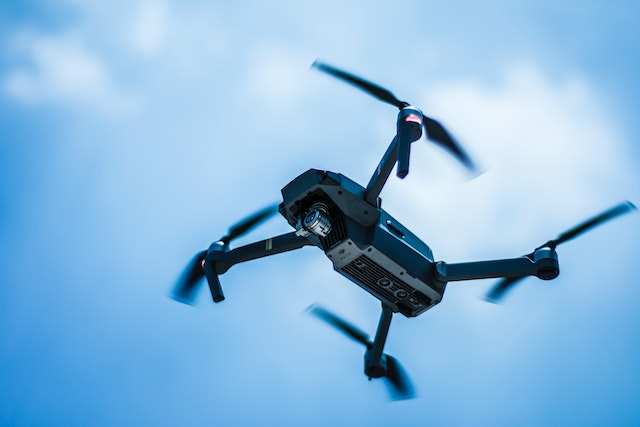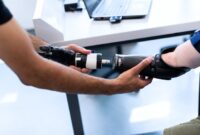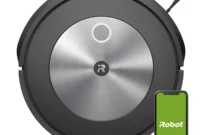Unmanned aerial vehicles (UAVs) have gained immense popularity and utility across various industries. Among the different types of UAVs, fixed-wing drones have emerged as a prominent and versatile choice. In this comprehensive overview, we will delve into the world of fixed-wing drones, exploring their functionalities, advantages, applications, and more.

Introduction
Fixed-wing drones, as the name suggests, are unmanned aircraft with fixed wings that generate lift through their aerodynamic design. Unlike their quadcopter counterparts, which rely on multiple propellers for flight, fixed-wing drones utilize forward momentum to stay aloft. This unique design enables them to cover larger distances, stay airborne for longer durations, and carry heavier payloads.
What are Fixed-wing Drones?
Fixed-wing drones are advanced aerial vehicles that operate on the principles of aerodynamics. They are equipped with fixed wings, similar to traditional airplanes, allowing them to achieve sustained flight. These drones typically have a rigid structure, with a fuselage housing the necessary components such as motors, batteries, sensors, and a payload bay.
Types of Fixed-wing Drones
There are various types of fixed-wing drones available in the market, each designed for specific purposes and applications. Some common types include:
1. Mapping Drones
Mapping drones are specialized fixed-wing UAVs equipped with high-resolution cameras and sensors. They are used for aerial mapping, surveying, and photogrammetry applications. These drones capture detailed imagery and data, which can be used to create accurate maps, 3D models, and topographic information.
2. Surveillance Drones
Surveillance drones are commonly employed in law enforcement, security, and surveillance operations. These drones have advanced imaging systems, including thermal cameras and zoom lenses, enabling them to monitor large areas, track suspects, and provide real-time situational awareness.
3. Delivery Drones
Delivery drones have gained significant attention in recent years for their potential to revolutionize logistics. These drones are designed to transport packages and goods from one location to another autonomously. They can access remote or hard-to-reach areas, making them ideal for urgent medical deliveries, humanitarian aid, and e-commerce deliveries.
4. Agricultural Drones
Agricultural drones, also known as crop-dusting drones, are revolutionizing the agricultural industry. Equipped with specialized sensors and spraying systems, these drones can efficiently monitor crops, analyze plant health, and apply targeted treatments such as fertilizers or pesticides. They help optimize farming practices, reduce costs, and enhance crop yields.
Advantages of Fixed-wing Drones
Fixed-wing drones offer several advantages over other types of UAVs, making them suitable for a wide range of applications. Here are some key benefits:
1. Longer Flight Time
Due to their aerodynamic design and efficient use of propulsion systems, fixed-wing drones can stay airborne for extended periods. This extended flight time allows them to cover larger areas, perform comprehensive surveys, and conduct prolonged surveillance operations.
2. Increased Payload Capacity
The fixed-wing design enables these drones to carry heavier payloads compared to quadcopters or other multirotor drones. This feature is especially valuable in applications requiring the transport of specialized equipment, high-resolution cameras, or heavy payloads like medical supplies or industrial sensors.
3. Greater Range and Coverage
Fixed-wing drones can cover vast distances in a single flight, making them ideal for applications such as mapping large areas, conducting aerial surveys, or monitoring expansive agricultural fields. Their ability to cover more ground efficiently saves time and resources.
4. Enhanced Stability
The fixed-wing configuration offers inherent stability to these drones. They can resist gusts of wind and maintain a steady flight, even in challenging weather conditions. This stability ensures more accurate data collection, smoother video footage, and precise control during mission-critical operations.
Applications of Fixed-wing Drones
Fixed-wing drones find applications across various industries, providing innovative solutions and transforming traditional practices. Some notable applications include:
1. Aerial Mapping and Surveying
Fixed-wing drones equipped with high-resolution cameras and LiDAR sensors are extensively used for aerial mapping, surveying, and creating topographic models. These drones enable the efficient collection of accurate data for infrastructure planning, land surveys, and environmental monitoring.
2. Infrastructure Inspection
The use of fixed-wing drones in infrastructure inspection has proven highly valuable. These drones can easily access hard-to-reach locations such as bridges, towers, and pipelines, providing detailed visual inspections and identifying potential maintenance issues or structural damage.
3. Environmental Monitoring
In environmental research and conservation efforts, fixed-wing drones are utilized to monitor ecosystems, wildlife populations, and vegetation. These drones can capture aerial imagery, detect changes in biodiversity, and aid in the study of climate patterns.
4. Search and Rescue Operations
Fixed-wing drones equipped with thermal cameras and advanced imaging systems have become vital tools in search and rescue operations. They can cover large areas quickly, identify survivors or missing persons, and provide real-time information to rescue teams on the ground.
Factors to Consider When Choosing a Fixed-wing Drone
When selecting a fixed-wing drone for a specific application, several factors should be taken into account:
1. Flight Time and Range
Consider the flight time and range requirements based on the intended use. Longer flight times and extended ranges are beneficial for applications such as mapping large areas or conducting long-range inspections.
2. Payload Capacity
Evaluate the payload capacity of the drone to ensure it can accommodate the necessary equipment, cameras, or sensors required for the intended application. This is crucial for tasks like aerial mapping, surveying, or carrying specialized payloads.
3. Control and Autonomy
Assess the control options and autonomy features of the drone. Some drones offer advanced autopilot capabilities, waypoint navigation, and programmable flight paths, which can streamline operations and improve efficiency.
4. Durability and Weather Resistance
Consider the durability and weather resistance of the drone, especially if it will be operating in challenging environments. Look for drones with robust construction, water and dust resistance, and reliable performance in various weather conditions.
Regulations and Licensing
Operating fixed-wing drones requires adherence to regulations and licensing requirements set by aviation authorities in different countries. Familiarize yourself with the specific regulations in your region, obtain the necessary certifications, and ensure compliance with local airspace regulations.
Maintenance and Safety Tips
To ensure the optimal performance and longevity of a fixed-wing drone, regular maintenance and adherence to safety guidelines are essential. Here are some tips:
- Follow the manufacturer’s maintenance recommendations and inspection procedures.
- Keep the drone clean, removing any dirt, debris, or moisture after each flight.
- Regularly check and calibrate sensors, cameras, and other critical components.
- Store batteries properly and charge them according to the manufacturer’s instructions.
- Conduct pre-flight checks, including a thorough inspection of the airframe, propellers, and control surfaces.
Future of Fixed-wing Drones
The future of fixed-wing drones looks promising, with ongoing advancements in technology and increased adoption across industries. Here are some potential developments:
- Improved Battery Life: Continued research and development aim to enhance battery technology, leading to longer flight times and increased endurance for fixed-wing drones.
- Smaller Form Factors: The miniaturization of components and advancements in lightweight materials may lead to the development of smaller and more portable fixed-wing drones without compromising performance.
- Enhanced Autonomy: Artificial intelligence and machine learning algorithms will likely play a crucial role in improving the autonomy and intelligent decision-making capabilities of fixed-wing drones.
- Beyond Visual Line of Sight (BVLOS) Operations: Regulatory changes and advancements in sense-and-avoid technologies may enable fixed-wing drones to operate beyond the visual line of sight, unlocking a wide range of new applications and opportunities.
Conclusion
Fixed-wing drones have revolutionized the field of unmanned aerial vehicles, offering extended flight times, increased payload capacities, and versatile applications. From mapping and surveying to infrastructure inspection and environmental monitoring, these drones provide valuable solutions across industries. As technology continues to advance, the future of fixed-wing drones holds immense potential for further innovation and integration into various domains.
FAQs
- Are fixed-wing drones more efficient than quadcopter drones? Fixed-wing drones are generally more efficient in terms of flight time and range due to their aerodynamic design. However, quadcopter drones have advantages in maneuverability and hovering capabilities.
- Can fixed-wing drones fly in windy conditions? Fixed-wing drones are designed to handle gusts of wind and maintain stability. However, excessively strong winds may affect their performance, and it is advisable to avoid flying in extreme weather conditions.
- What licenses or certifications are required to operate a fixed-wing drone? The specific licenses or certifications required vary by country and region. It is important to check with the relevant aviation authorities and comply with the regulations in your area.
- How do fixed-wing drones capture images for mapping purposes? Fixed-wing drones capture images for mapping through onboard cameras, often equipped with high-resolution sensors. These drones follow pre-programmed flight paths, capturing overlapping images that are later stitched together to create accurate maps and 3D models.
- Are fixed-wing drones capable of vertical takeoff and landing (VTOL)? No, fixed-wing drones are not capable of VTOL. They require a runway or launching mechanism for takeoff and landing due to their fixed-wing configuration.


